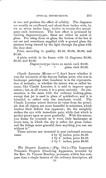“AN EYE MADE QUIET”
The Claude Mirror & the Picturesque
“A succession of high-coloured pictures are continually gliding before the eye. They are like the visions of the imagination, or the brilliant landscapes of a dream.”
— William Gilpin, Remarks on Forest Scenery
The Claude mirror (named after its ability to create an image reminiscent of the painting of 17th century French artist Claude Lorrain) is a small black, convex mirror. It was used widely in the eighteenth and nineteenth centuries for examining and sketching landscape. The Wye Valley featured a number of celebrated viewing stations—not the least Tintern Abbey—where the mirror could be employed to great effect. This portion of the exhibition features a number of contemporary Claude mirror views by Alex McKay of most of the stations of the lower Wye Valley.
Thomas Gray popularized the use of the Claude mirror in his 1769 “Journal in the Lakes”, a pioneering account of tourism in the Lake District of the north of England. Sometimes the device is also referred to as a “Gray glass” in the period. Thomas West continued Gray’s project and use of the mirror in his influential Guide to the Lakes (1778). He advises travelers to carry two mirrors of differing convexity: one to manage reflections of great and near objects and a flatter glass for distant and small objects.51 The best-known advocate of the mirror is undoubtedly the Rev. William Gilpin, a traveler, author, artist and drawing-master. Gilpin even mounted a mirror in his carriage, the better to enjoy “a succession of high-coloured pictures...continually gliding before the eye,” which he likened to “the visions of the imagination; or the brilliant landscapes of a dream.” Many of his sketches and paintings bear traces of his use of a mirror, such as the aquatints of Tintern Abbey. An edition of Gilpin’s seminal Observations on the River Wye may be seen in “Thoughts of More Deep Seclusion”: The Wye Tour.
To use a mirror, one turns one’s back to the scene or object of interest, holds and adjusts the instrument about shoulder height to view the reflected scene. The slightly convex surface of the mirror pushes the background of a scene into the far distance, widens the view, and makes the foreground and vista pleasing to the eye. Distances between the background and foreground seem diminished whilst the focus is sharpened. The black glass dramatically changes the tonal values and intensifies the register of the scene, at once simplifying and unifying the palette. The Claude mirror is a powerful tool for discovering and contemplating landscape views and in turn a useful compositional aid for artists.
Claude mirrors were popular for the better part of a century in Britain, Europe and North America. Drawing manuals such as the 1802 French text by Valenciennes shown here discussed their utility, and tourists carried them in their hunt for the picturesque. Mirrors could be purchased from philosophical or scientific instrument-makers, opticians (such as Benjamin Pike of New York), shops selling artist’s supplies and sometimes at tourist establishments themselves.

|
Thomas Gray to Dr. Wharton, Sept.30, 1769 Reproduced from: The Poems of Mr. Gray. To which are Prefixed Memoirs of his Life and Writings York: printed by A. Ward, 1775 Gray deploys his mirror in many different situations: to examine Gothic architecture at Kirkstall Abbey, to admire and “fix” sunsets in his memory and to contemplate the dramatic vistas near Borrowdale. |



|
Thomas West A Guide to the Lakes, in Cumberland, Westmorland, and Lancashire London: printed for J. and J. Richardson [& etc.], 1799 |

view related images |
William Gilpin Remarks on Forest Scenery, & other woodland views, by the late William Gilpin. Edited by Sir Thomas Dick Lauder Edinburgh: Fraser & Co., 1834 |

view related images |
William Gilpin “Tintern Abbey.” Reproduced from Observations on the River Wye, and Several Parts of South Wales, &c, relative chiefly to picturesque beauty; made in the summer of the year 1770 London: printed for R. Blamire, 1792 |

|
Alex McKay/C.S. Matheson After Gainsborough, Man with Claude Mirror. 2005 Loaned by the artists |

|
Benjamin Pike Catalogue description of Claude Lorraine mirror. Reproduced from Illustrated Descriptive Catalogue of Optical, Mathematical and Philosophical Instruments New York: B. Pike, 1856 |

view related images |
P.H. Valenciennes Élémens de perspective pratique à l'usage des artistes, suivis de réflexions et conseils n élève sur la peinture, et particuliérement sur le genre du paysage Paris: A. Payen, 1820 Loaned from the Fine Arts Library, University of Michigan Claude mirrors were popular in Britain, throughout the Continent and in North America. Drawing manuals stress the utility of the mirror for teaching composition and the disposition of lights and dark areas in a scene. Valenciennes notes that the reflection in a Claude mirror has “the sharpness and precious finish of Nature” and that virtually “everything that is seen in this mirror can be rendered in Painting.” |